Key Points and Summary – Europe’s Eurofighter Typhoon isn’t going stealth—and that’s the point.
-The “Super Typhoon” refresh adds ECRS Mk2 AESA, Arexis EW, Praetorian DASS, structural life extension, and new weapons like Meteor and standoff strike. It then leans on networking with F-35s, drones, and ground sensors to survive, find, and kill.
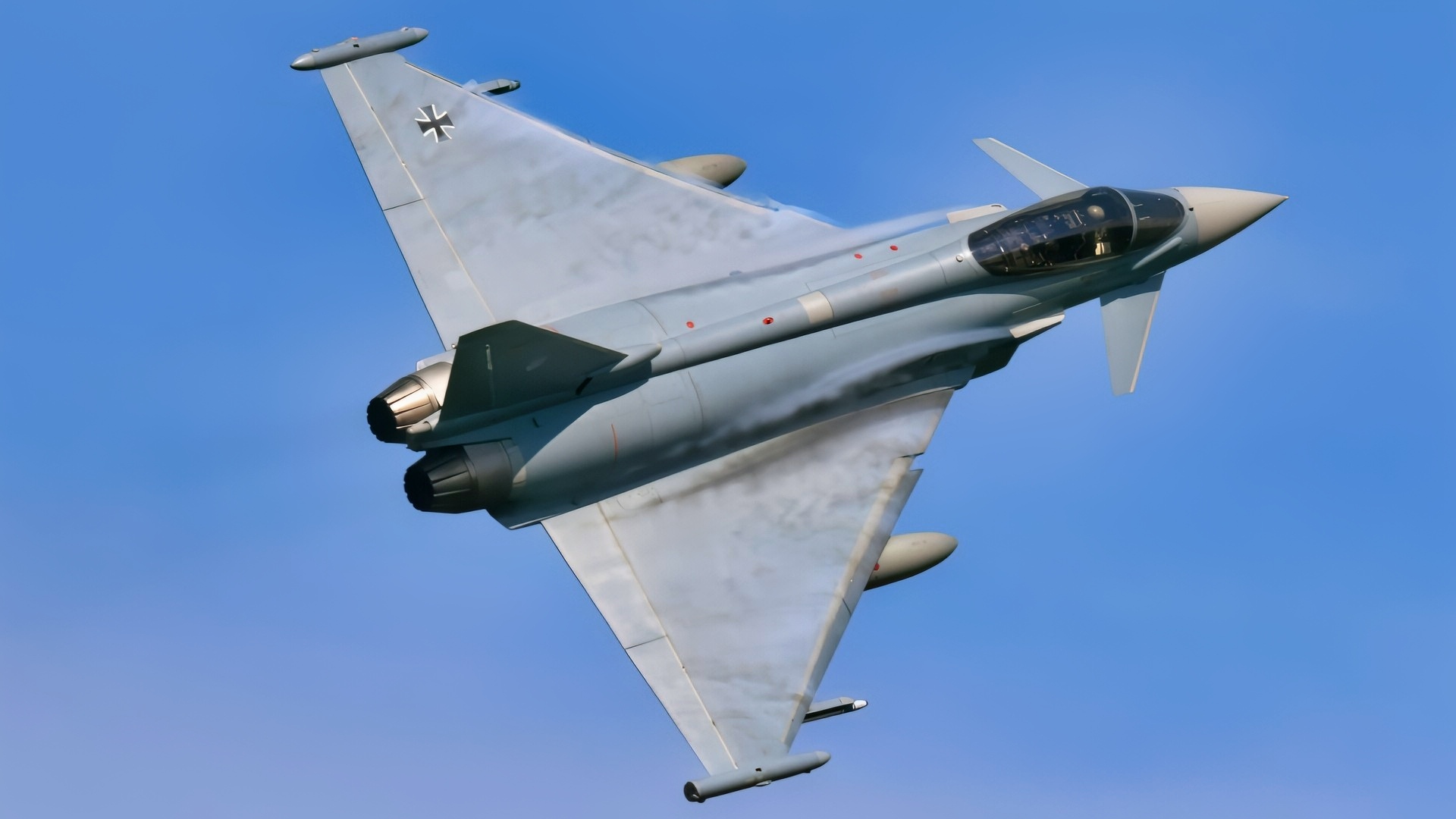
A German Air Force pilot, assigned to the German Air Force Weapons School, conducts strafing runs with an Eurofighter Typhoon in conjunction with U.S. Air Force Joint Terminal Attack Controller assigned to 2d Air Support Operations Squadron identifying targets on the ground at the 7th Army Training Command’s Grafenwoehr Training Area, Germany, June 9, 2021. (U.S. Army photo by Gertrud Zach)
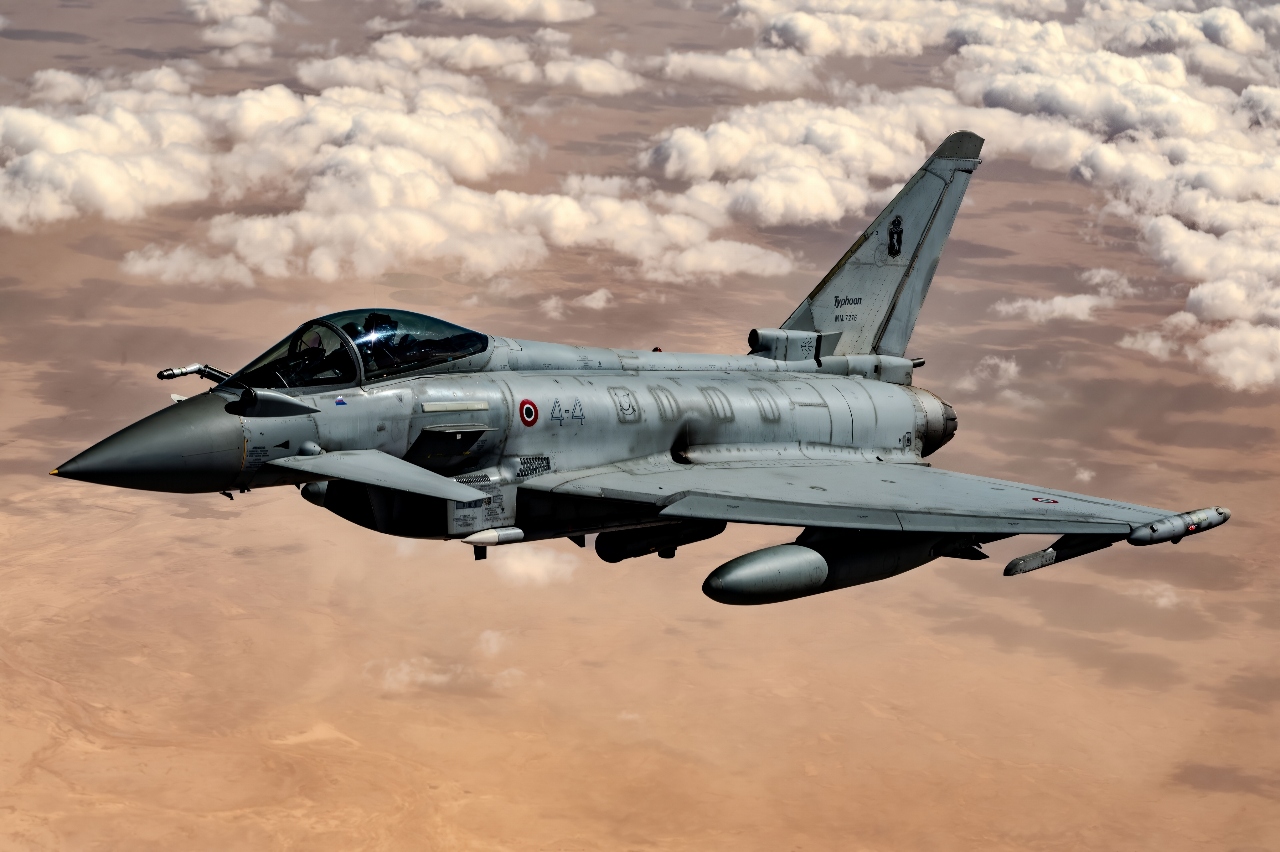
An Italian Air Force F-2000 Eurofighter Typhoon flies a routine presence patrol mission over the U.S. Central Command area of responsibility, Feb. 6, 2025. Close collaboration with partner nations improves interoperability, ensuring rapid crisis response and sustained operations to protect vital mutual interests in the AOR.
(U.S. Air Force photo by Staff Sgt. Jackson Manske)
-The bet: jamming, range, and data fusion can offset a lack of internal bays and full-aspect low observability. With FCAS years away, fresh German orders and a production ramp keep Typhoon Europe’s primary non-stealth air-superiority jet through the 2030s. Interoperability may be its ace—stealthy friends, lethal missiles, smarter tactics.
Does the Eurofighter Typhoon Really Need Stealth?
In October 2025, the Eurofighter Typhoon’s future received a pretty decisive vote of confidence as Airbus Defence and Space secured a contract from Bundeswehr for 20 new aircraft equipped with the latest E-Scan radar and Arexis electronic warfare suite, scheduled for delivery between 2031 and 2034.
At the same time, the consortium announced a production ramp-up from 12 to 20-30 jets per year to meet surging demand.
These new developments mean the Typhoon has a future ahead of it, taking on an ever-evolving role in Europe’s defence architecture.
The push to keep the aircraft relevant in high-end conflict environments is significant, but despite the hardware refresh, the Typhoon hasn’t leaped into fifth-generation status.
This is a squarely fourth-generation fighter—now a 4.5-generation fighter—that doesn’t feature the built-in stealth technology of modern fifth-generation jets.
Nonetheless, the upcoming Super Eurofighter Typhoon looks promising – in more ways than one.
A Proven But Aging Platform
The Typhoon was developed by a consortium of the UK, Germany, Italy, and Spain to provide a high-performance air superiority fighter that entered service in the early 2000s.
But it wasn’t a product of the new millennium.
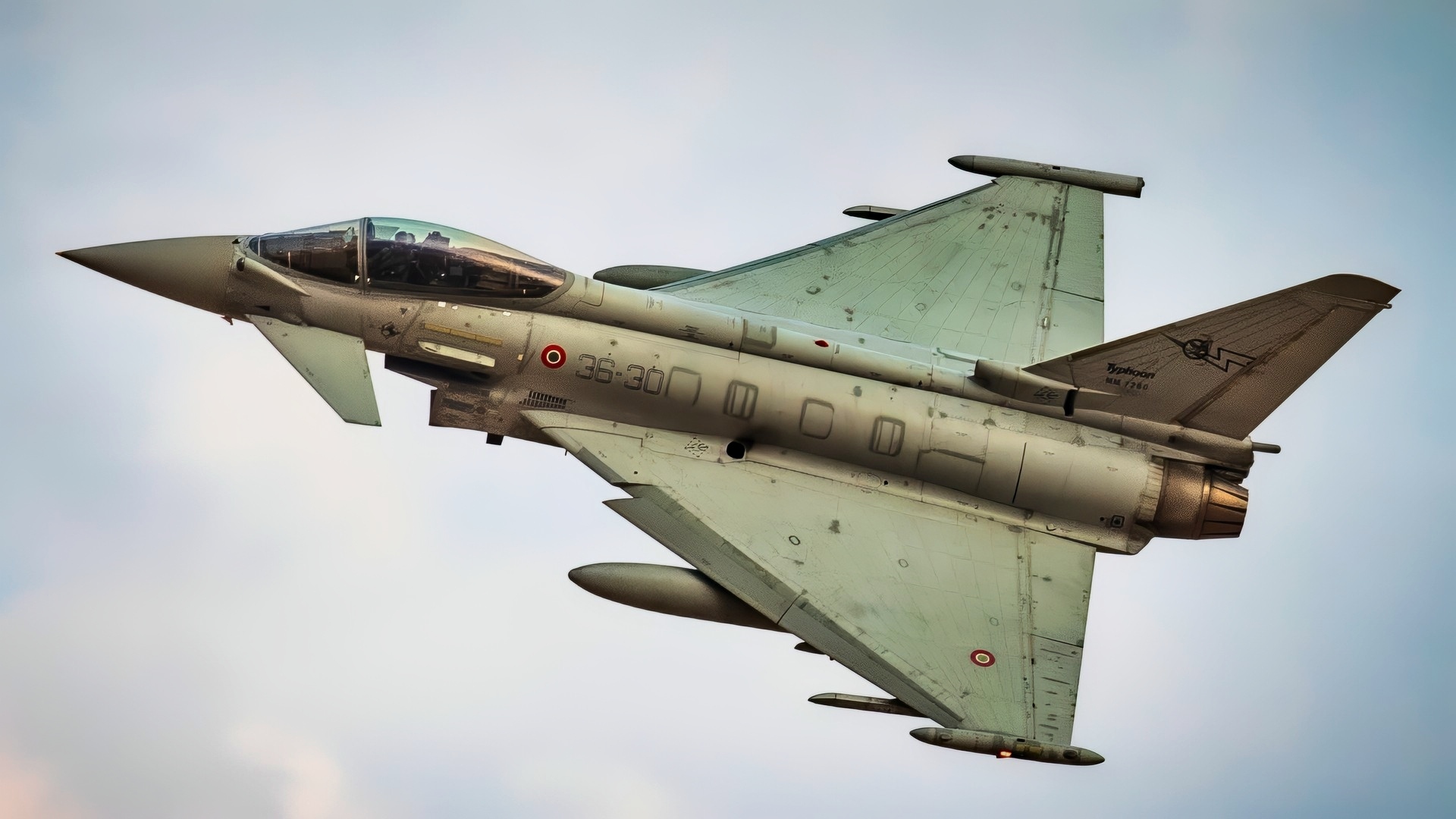
An Italian Air Force Eurofighter Typhoon maneuvers during a joint close air support exercise with U.S. Marines attached to the Special Purpose Marine Air-Ground Task Force – Crisis Response – Central Command (SPMAGTF-CR-CC) 19.2, and service members with the Italian Air Force in Kuwait, Oct. 14, 2019. The SPMAGTF-CR-CC works with partner nations on maintaining regional security. (U.S. Marine Corps photo by Sgt. Kyle C. Talbot)
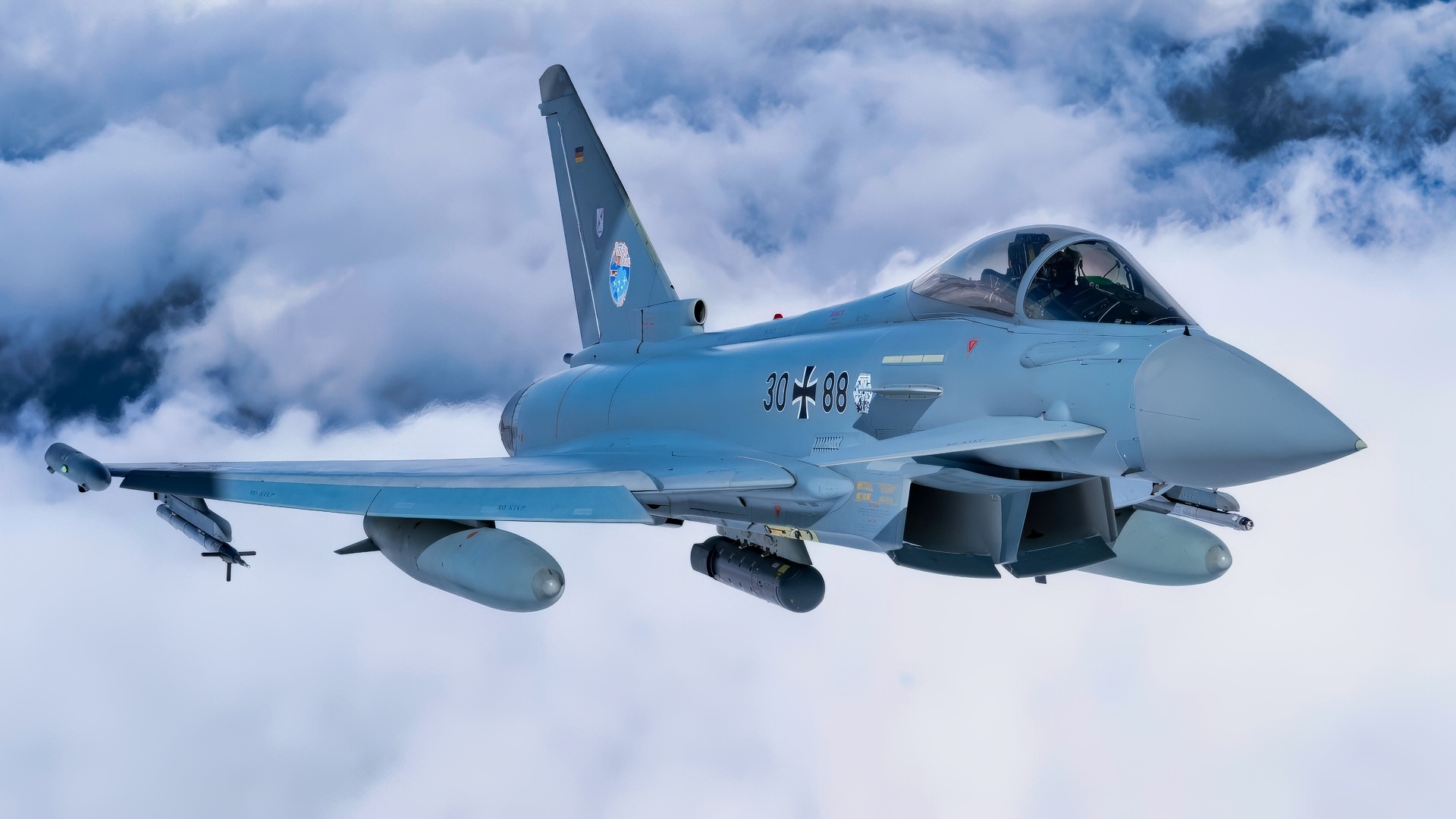
A German Air Force Eurofighter Typhoon flies over Alaska during exercise Arctic Defender 24 at Joint Base Elmendorf-Richardson, Alaska, July 8, 2024. Arctic Defender is a German Air Force-led exercise that provides a unique opportunity to integrate various forces into joint, coalition and multilateral training from simulated forward operating bases and is part of several exercises under Pacific Skies 24. Pacific Skies is a combination of several exercises in the Indo-Pacific theater in which German, French and Spanish air forces participate with U.S. forces. (U.S. Air Force photo Senior Airman Shelimar Rivera Rosado)
The Typhoon was actually designed during the late Cold War, featuring a delta-canard twin-engine configuration focused on achieving high maneuverability and a good thrust-to-weight and kinematic advantage.
Over the years, the Typhoon has evolved in different ways, eventually becoming a multirole combat aircraft —suitable for air-to-air and air-to-ground strikes —and has been exported to countries such as Saudi Arabia, Kuwait, Qatar, and Oman.
Given the rapid evolution of air defense systems, electronic warfare, the rise of stealth platforms, and now the advent of drone technology, the Typhoon’s original configuration is no longer quite the powerhouse it once was.
In many ways, the lack of stealth is a fatal flaw – but if it can overcome that flaw in the same way France’s Rafale does, it could just remain relevant. And that’s what the upgrade program is all about.
What to Expect
Europe is currently pursuing several significant upgrades to extend the Typhoon’s service life and relevance, ensuring it remains an effective fighting force.
Among the most significant changes is the new Active Electronically Scanned Array (AESA) radar system, the ECRS Mk2, developed to provide enhanced detection, tracking, and electronic-attack integration.
Additionally, the upgraded Defensive Aids Sub-System (DASS) and self-protection features, as part of the Praetorian DASS package, will improve survivability in contested electronic environments.
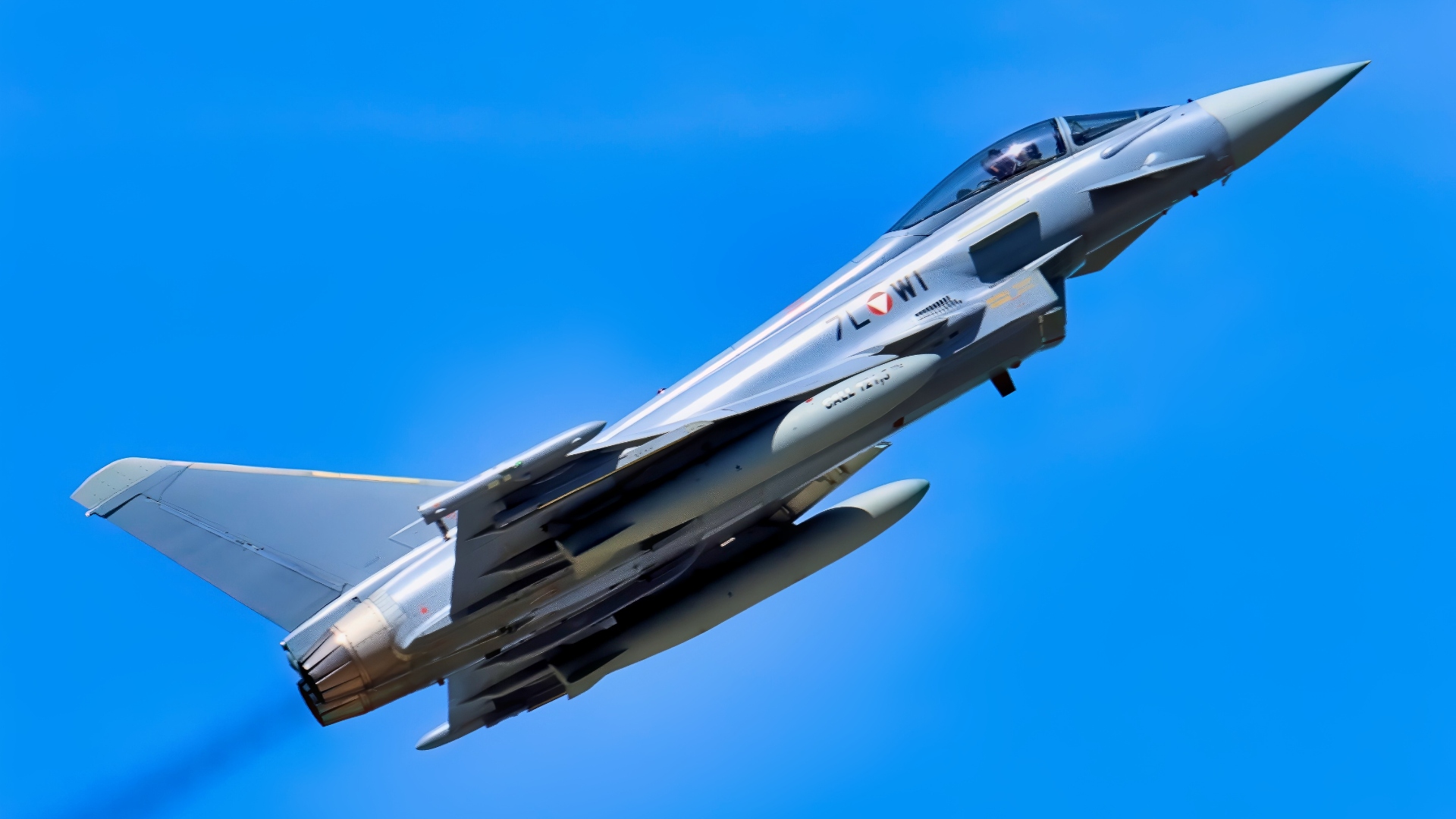
Eurofighter Typhoon. Image Credit: Creative Commons.
The integration of more advanced weapons is also crucial; if the Eurofighter Typhoon can’t be stealthy, it needs to be lethal.
Among those upgrades is the ability to carry beyond-visual-range air-to-air missiles like the Meteor, as well as precision standoff weapons for strike missions. The upgraded Typhoon will also feature improved air-to-ground capabilities.
Then there’s the matter of structural life extension and avionics refreshes. These upgrades are designed to keep fleets viable into the 2040s, giving the Typhoon another two decades of life.
In the short term, these upgrades will serve as a bridge to next-generation technology. In the medium term, they’ll likely supplement those new fleets and serve alongside their successors.
Europe Has No True Stealth Fighter – Yet
The fact that the Eurofighter Typhoon isn’t stealth can be overcome in specific ways.
Talented crews and pilots know how to operate jets like these by focusing on their strengths, not their weaknesses. Combined with modern upgrades, the Typhoon is a perfectly capable fighter jet.
But the reality is that Europe needs a true stealth jet. At present, Europe does not field a domestically-designed stealth combat fighter, relying heavily on the United States’ F-35A Lightning II.
The F-35 is obviously a very competent stealth jet. The best of its generation in the world, in fact. But Europe is increasingly looking inward for a multitude of reasons — from maintenance and logistics to security — and developing an indigenous jet is widely seen as crucial.
The Typhoon, alongside the F-35, helps serve as a bridge until Europe’s own next-generation programs—like the Future Combat Air System (FCAS) —bear fruit. Those programs, however, are still years away from operational deployment, and so the Typhoon has a monumental job ahead of it.
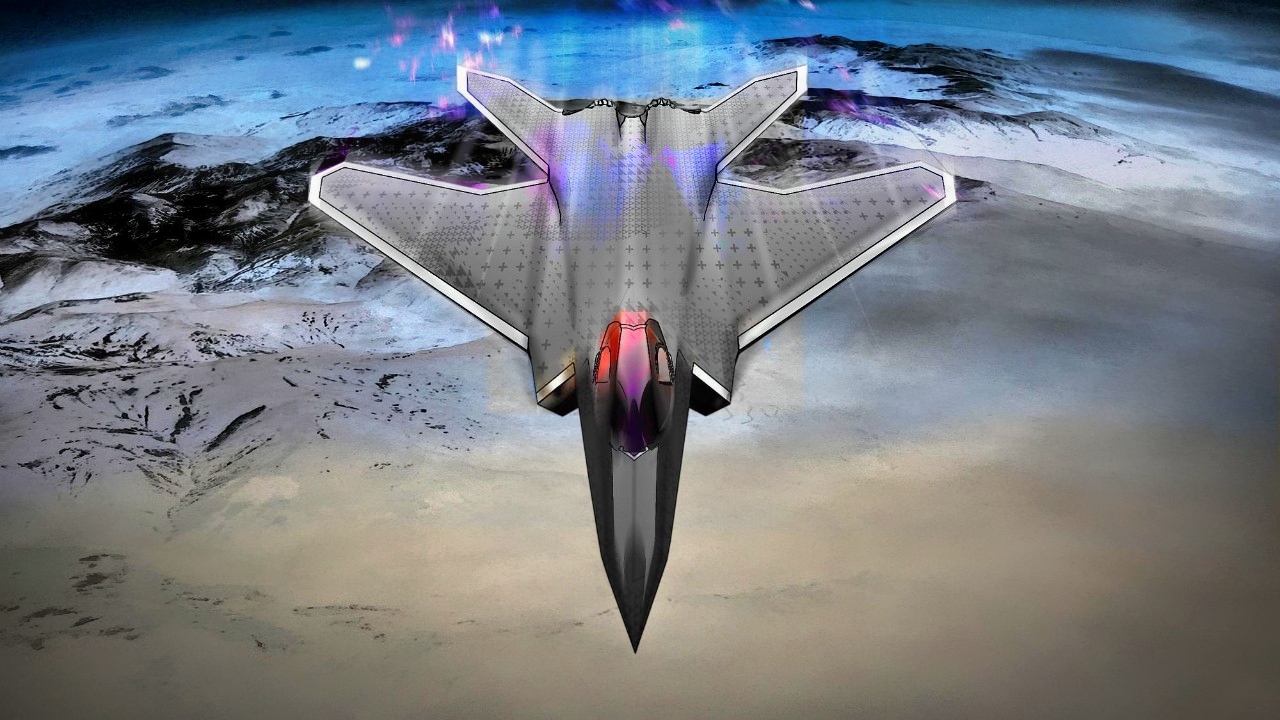
FCAS Fighter from Dassault. Image Credit: Dassault.
By the time Bundeswehr’s new Typhoons enter service in the early 2030s, Europe’s sixth-generation FCAS may still not be operational, making the Typhoon the continent’s primary non-stealth air-superiority fighter for at least another decade.
Its upgrades will help integrate it into emerging multi-domain command networks, enabling real-time data exchange with stealth platforms like the F-35, drones, and ground-based sensors.
That interoperability may ultimately prove to be the Super Typhoon’s greatest strength; it won’t be stealthy, but it will become the ultimate coordination tool.
About the Author:
Jack Buckby is a British author, counter-extremism researcher, and journalist based in New York. Reporting on the U.K., Europe, and the U.S., he works to analyze and understand left-wing and right-wing radicalization, and reports on Western governments’ approaches to the pressing issues of today. His books and research papers explore these themes and propose pragmatic solutions to our increasingly polarized society. His latest book is The Truth Teller: RFK Jr. and the Case for a Post-Partisan Presidency.
More Military
The ‘Super’ B-52H Stratofortress Bomber Is Already Flying
‘Go Home’: Stealth F-22 Raptor Flew Right Under Iranian F-4 Phantom Undetected
Russia’s ‘New’ PAK DA Stealth Bomber Has a Message for Every Military On Earth
China’s New H-20 Stealth Bomber Has a Message for Any Military on Earth
Mach 2 F-4 Phantom II Fighter Has a Message for Every Air Force on Earth










